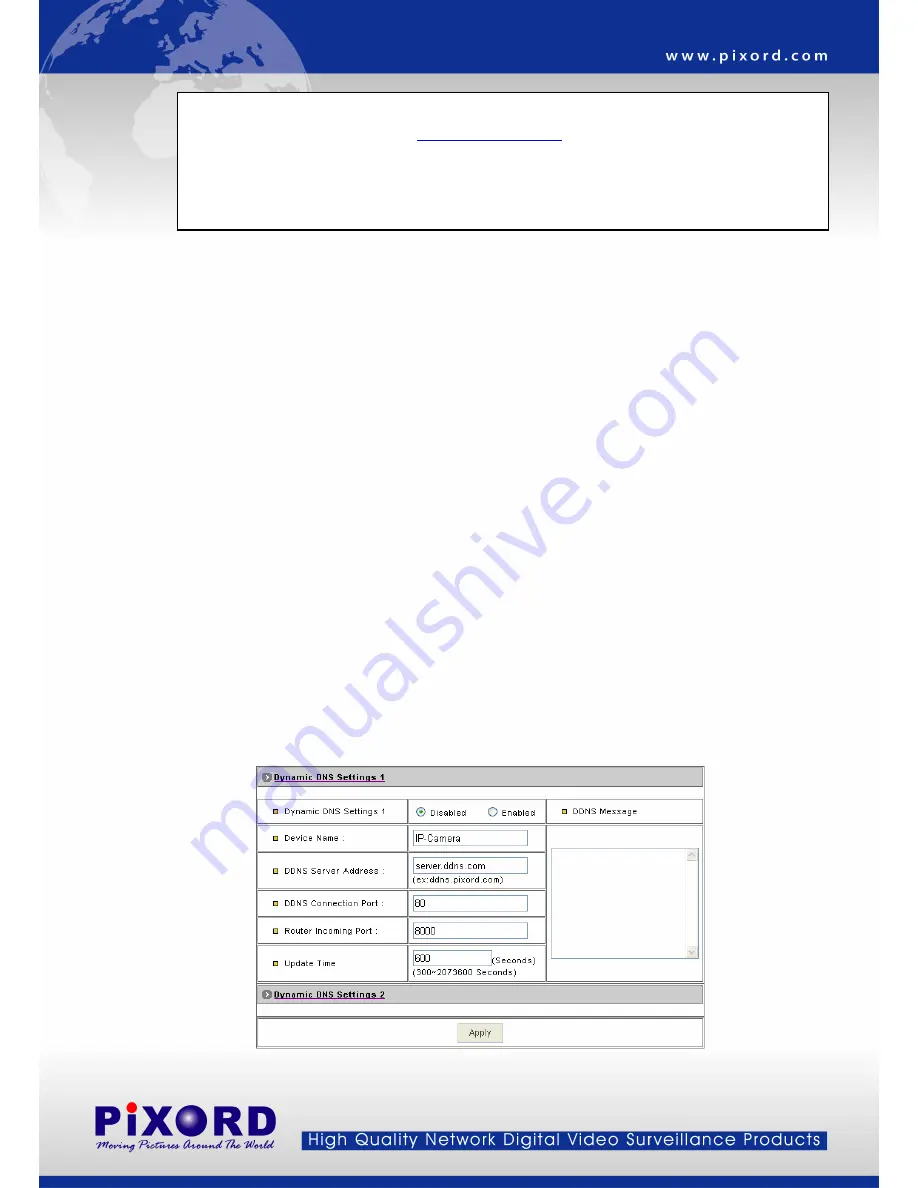
Note:
Before changing the listen port, user must add a port directive “:” in browser URL in order to get correct
connection. (i.e. http://<IP>:<Port> , e.g.
http://192.168.0.200:8000
) to access the device with IP 192.168.0.200
and port with 8000).
These features enable user to use the device behind NAT or IP Sharing devices which could access up to 65536
network cameras with one IP Address.
z
RTSP Port: The port on which the device will receive RTSP (streaming video) requests.
z
Apply: Click this button to save the changes made.
– Dynamic
DNS
Settings
The DDNS (Dynamic Domain Name Service) is used when users want to access the network camera with an easy
memorized name such as http://demo.server.ddns.com instead of http://61.220.235.172. This service could be useful
when the network camera is located behind Dial-up ADSL or IP sharing devices, which does not have fix IP address,
then it’s impossible to reach the network camera from Internet.
When the network camera enables the DDNS service, it will “register” to the DDNS server with its information, such as
server name to access, router virtual port number and updated frequency, etc.Then network camera automatically
“update” to the DDNS server by a fix frequency, so even IP is changed by ISP, the DDNS server still could get and update
internal database. Then, once users access from Internet with its register name, e.g. if registering with server name
“demo” to DDNS server “server.ddns.com”, the network camera could be accessed by http://demo.server.ddns.com.
The system provides two ways for the DDNS settings:
DDNS Settings 1:
This is a public DDNS server that it provides DDNS service without registering any
information.
z
Dynamic DNS Settings 1: Select [Enable] if you wish to activate the DDNS service.
- 36 -














































